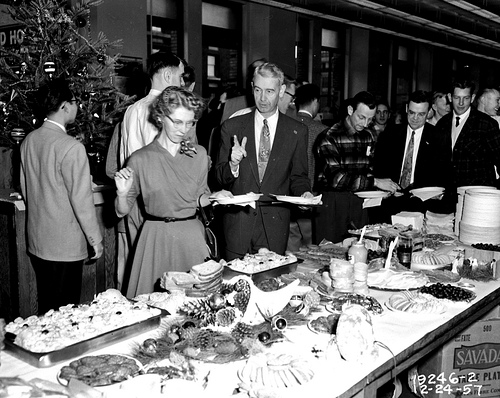There’s a quote on the Internet that is attributed to Virginia Woolf. ‘I ransack public libraries, and find them full of sunk treasure,’ it reads. In order to find its source I paste the full quote into a search box, held together by inverted commas. ‘Did you mean: “I ransack public libraries, and find them full of sunken treasure.”’ Google asks me. Hmmm, I wonder – did I? Be they sunk or sunken treasure, libraries are certainly the places to find them. A library’s collection policy, as Tricia Genat, Managing Director of ALS Library Services says, ‘is not just about working to the mean but also making sure that you’ve got some outliers in your collection.’
Where both libraries and bookshops will stock bestsellers, libraries are looking for a little bit more. ‘People are interested in all sorts of weird and wonderful things,’ says Genat. Librarians want to make sure that they’re, ‘expanding the collection to include more unusual [publications] or some new trends or different kinds of formats,’ she says.
Verily libraries provide a solid opportunity for independent publishers to get their work to readers. In contrast to being included in bookstores (which can be complex and difficult for independent publishers), Genat says that there are no disadvantages to getting books into libraries. ‘One of the major advantages for small publishers is that they’re in an open field competitively,’ Genat explains. Librarians have wider mandates and make their decisions about buying a book on a computer screen using filters based on genre, category etc. ‘When the library selector is scrolling through those titles your book has as much chance of getting picked as one from [a major publisher],’ Genat says. There are however, a few provisos.
To be noticed on the computer screen you’ll need a decent cover and a well-written blurb. ‘If you’re a small publisher and you spend absolutely no money on your cover (and it’s going up against lovely covers) then a library selector is just going to scroll past yours and not select it,’ Genat warns. ‘If the blurb that you’ve written is correct, up-to-date, informative and helpful then that’s the second thing that the library selector looks at,’ she says. If you make these elements the best you possibly can your book will be in contention for selection.
Library selectors read blogs, newspapers and sites like Goodreads. ‘If [a library selector] sees a name that pops up as they scroll through the list (ie a brand new author, a brand new publisher, a tiny publisher that’s causing a little buzz) they will [remember it],’ says Genat. The selector’s decision is only a $20 or $30 one – at times they can just order a book and see what happens. ‘If it gets borrowed half a dozen times then that’s a publisher or author [the selector] might add to the standing order,’ says Genat. She says that social media is absolutely essential for publishers in this context. ‘If it’s out there people will be reading it,’ she says. (For more on publishers and social media read this post on vertical marketing).
In addition to considering cover designs and blurbs, independent publishers also need to pay attention to things like ensuring page numbers are correct, that there’s a bar code on the back and that the book has an ISBN. ‘The physical quality is also important. It can’t fall apart,’ says Genat. Recently she had to return an order of over 30 books because of their poor quality. ‘There was absolutely nothing wrong with the content of the book. The printer just did a bad job,’ she says.
In a panel at this week’s Independent Publishing Conference Genat (as chair), Anita Cattogio (Yarra Plenty Library), Michael Mackenzie (Boyd Library) and Leesa Lambert (Little Bookroom) will share some of the joys and frustrations of putting together a library collection. They’ll discuss what a collection policy does, what’s available, what the price points are, what captures people’s attention and what’s important to have on the shelves in the context of independent publishing. (They’ll give advice on sinking independent treasures into libraries!)
In the meantime my Internet searches aren’t confirming whether Woolf said sunk or sunken (or where she said it). I can see that the British Library are going for sunk, and I figure that’s a reliable source… but I might just need an excuse to ransack my local library this afternoon. You never know what independent treasure I’ll find.
Genat’s panel Libraries and Librarians will be held at 1.15pm, Friday 14 November at the Independent Publishing Conference.


















